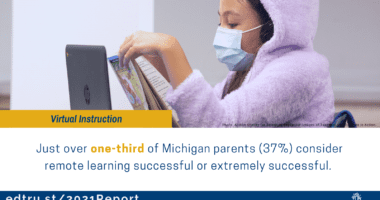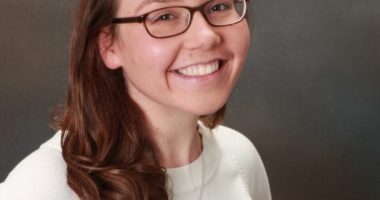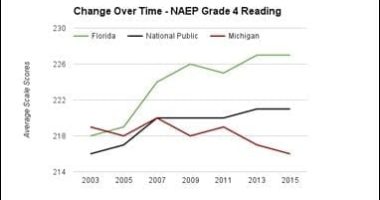Higher Standards Unlock Classroom Creativity
By Matt Moll
Over the past few years, Michigan has moved to higher learning expectation for students. These standards are more rigorous and challenging for students and teachers alike. This rigor is important for making sure that every student is working towards graduating from high school ready for career, college and life. It also provides a great opportunity for classroom teachers to connect topics and skills, and go deeper into lessons. Our higher standards foster creativity in our classrooms.
In 2003, I taught in a large county-run district in Maryland, which a few years earlier finished a redesign that realigned their K-12 curriculum. Part of this alignment required us to have common assessments and common data tracking. When I heard the word “common” my first thought was, “I have to teach the same lesson, at the same time as the other 10th grade teachers, and teach it in the same way.” Imagine my dismay at the thought of losing autonomy and creativity in the classroom. From a teaching standpoint, this is scary because autonomy is an important attribute to the profession.
My department head quickly realized my trepidation, and quickly relieved my fear, by explaining that all 10th grade teachers will be teaching the same standards/skills, but how we teach those is completely up to us. She explained that each grade level K-12 had a theme and it was our responsibility to find materials that addressed those themes, as well as, the standards and skills that Maryland created. My paradigm shifted when the realization hit that not only are we teaching particular standards/skills to students, but that we get to be as creative as possible in selecting HOW we planned on teaching the standards/skills.
Our grade had a theme of Decisions and Outcomes. My job was to address this developmentally appropriate theme in the most creative ways possible, while mastering the standards/skills that the state of Maryland had created. So, I put to task what my department chair explained and created a lesson plan that was creative AND hit the standards.
One memorable experience was having the class create a Choose Your Own Adventure novel. Every student had to author part of the story. Groups were broken down into editors, illustrators, design and binding, marketing and publishing. When the project was complete, the students had created a 126 page novel that was ready to be sold. All of these groups were aligned with the standards/skills that Maryland created and expected their students to master.
As teachers we don’t just teach a novel and then move on to the next novel allowed by our district. Through discussion, we analyze the key ideas and details of the story. We compare and contrast writing style and structure to other authors. Each day we lead our students through how they can integrate the new knowledge and ideas that they are being presented with in their own lives, and it is through these methods that we help our students read other complex works of both fiction and non-fiction. Not only are we teachers of content, we are responsible to research and find the best content we possibly can, and deliver in it in a way that best reaches our students. This is where creativity comes into the classroom.
With career- and college-ready standards, we as teachers need to shift our paradigm and not think that the content is what we are teaching, but that we are using content to teach a set of rigorous standards and skills that will greatly benefit our students in their future. It is through this change in thinking that autonomy and creativity in the classroom can be realized.






